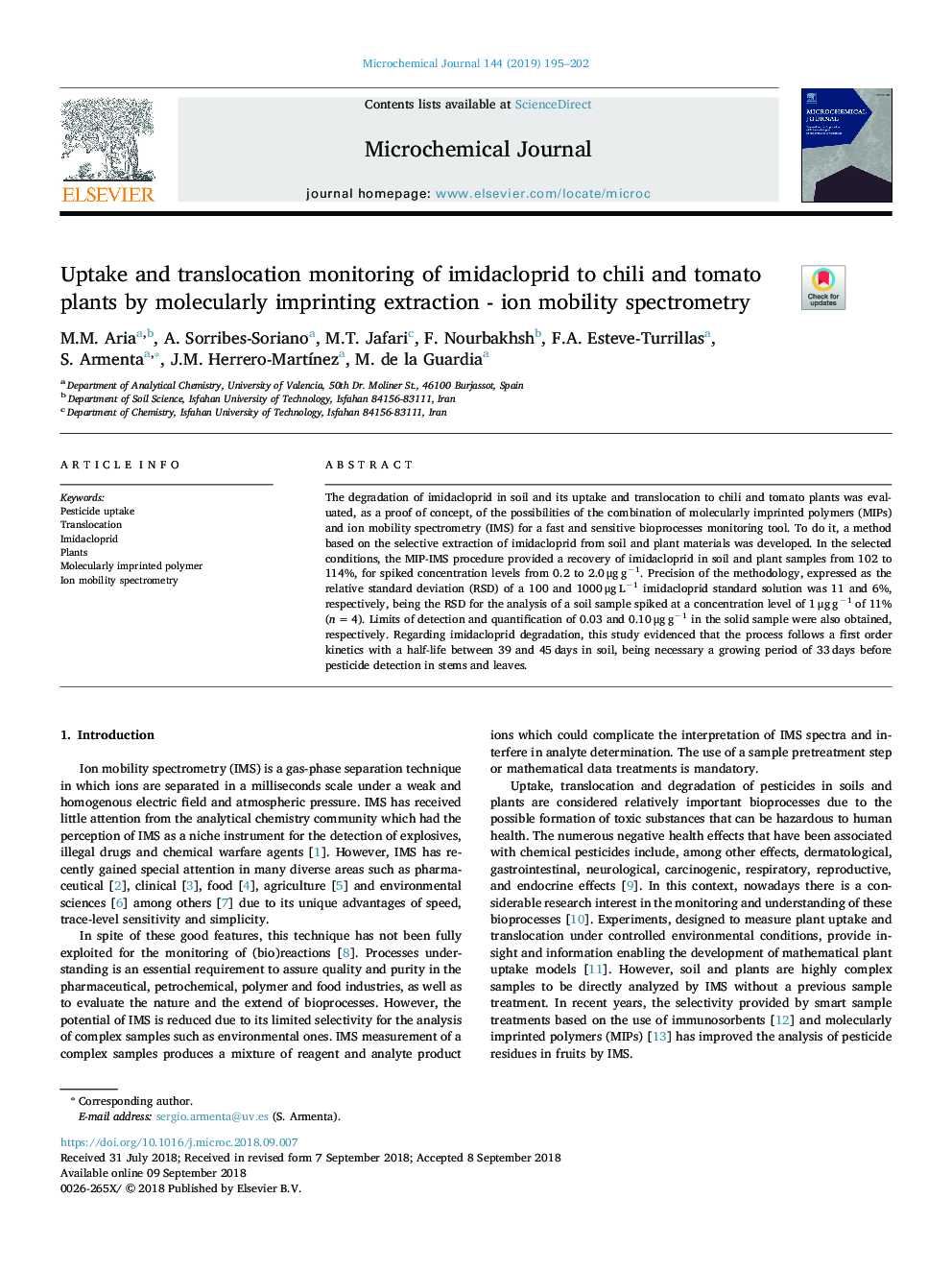| Article ID | Journal | Published Year | Pages | File Type |
|---|---|---|---|---|
| 10140968 | Microchemical Journal | 2019 | 8 Pages |
Abstract
The degradation of imidacloprid in soil and its uptake and translocation to chili and tomato plants was evaluated, as a proof of concept, of the possibilities of the combination of molecularly imprinted polymers (MIPs) and ion mobility spectrometry (IMS) for a fast and sensitive bioprocesses monitoring tool. To do it, a method based on the selective extraction of imidacloprid from soil and plant materials was developed. In the selected conditions, the MIP-IMS procedure provided a recovery of imidacloprid in soil and plant samples from 102 to 114%, for spiked concentration levels from 0.2 to 2.0â¯Î¼gâ¯gâ1. Precision of the methodology, expressed as the relative standard deviation (RSD) of a 100 and 1000â¯Î¼gâ¯Lâ1 imidacloprid standard solution was 11 and 6%, respectively, being the RSD for the analysis of a soil sample spiked at a concentration level of 1â¯Î¼gâ¯gâ1 of 11% (nâ¯=â¯4). Limits of detection and quantification of 0.03 and 0.10â¯Î¼gâ¯gâ1 in the solid sample were also obtained, respectively. Regarding imidacloprid degradation, this study evidenced that the process follows a first order kinetics with a half-life between 39 and 45â¯days in soil, being necessary a growing period of 33â¯days before pesticide detection in stems and leaves.
Related Topics
Physical Sciences and Engineering
Chemistry
Analytical Chemistry
Authors
M.M. Aria, A. Sorribes-Soriano, M.T. Jafari, F. Nourbakhsh, F.A. Esteve-Turrillas, S. Armenta, J.M. Herrero-MartÃnez, M. de la Guardia,
